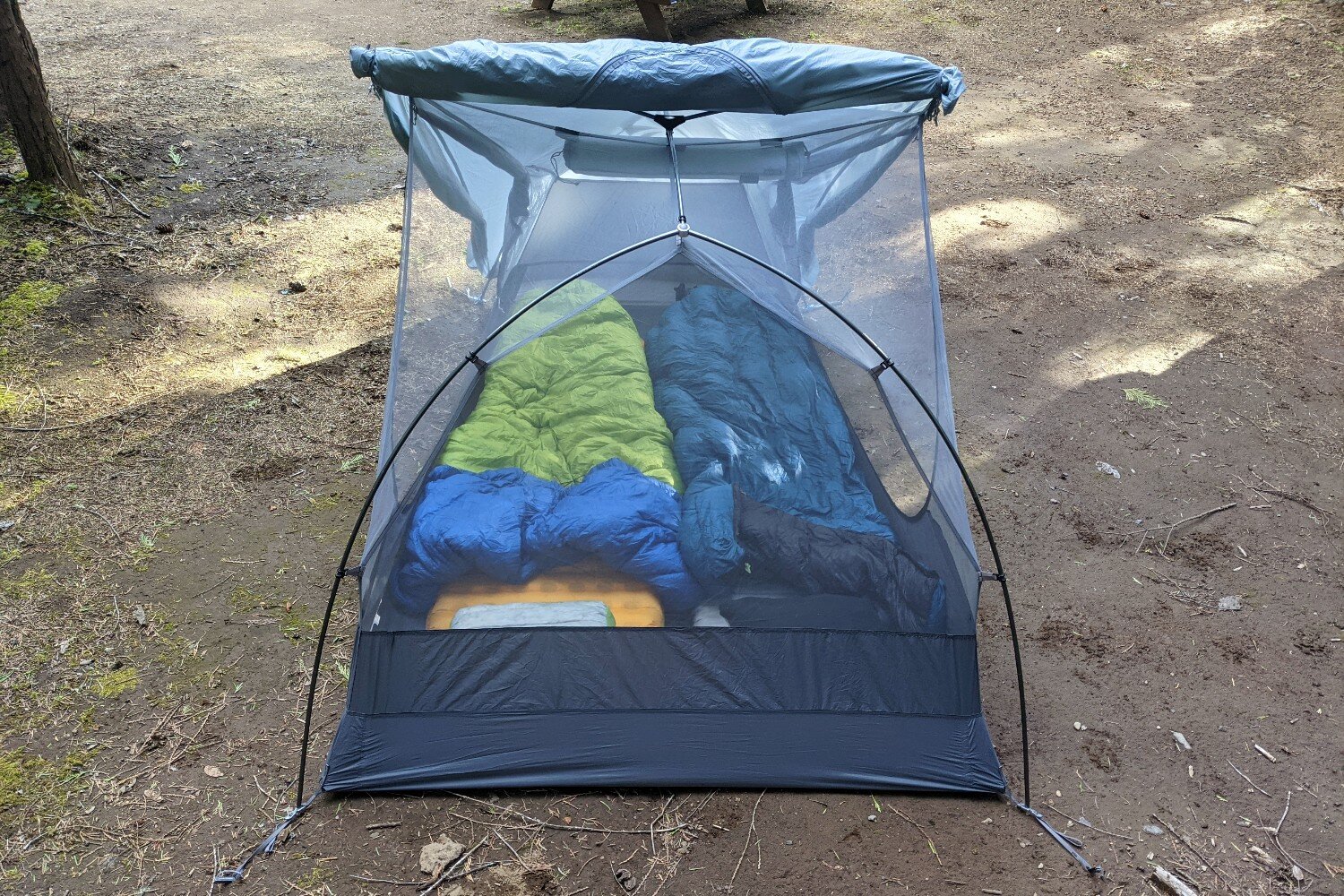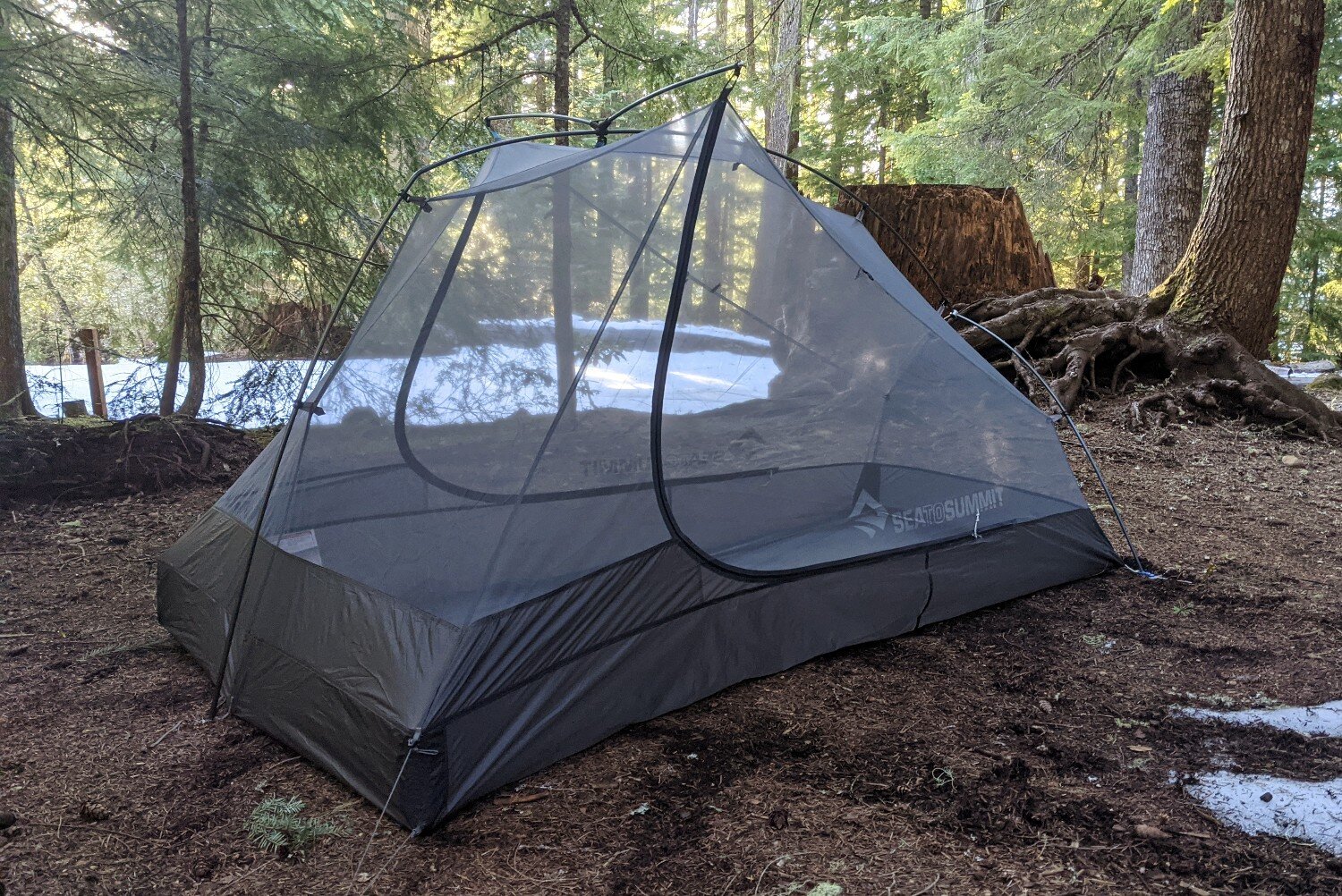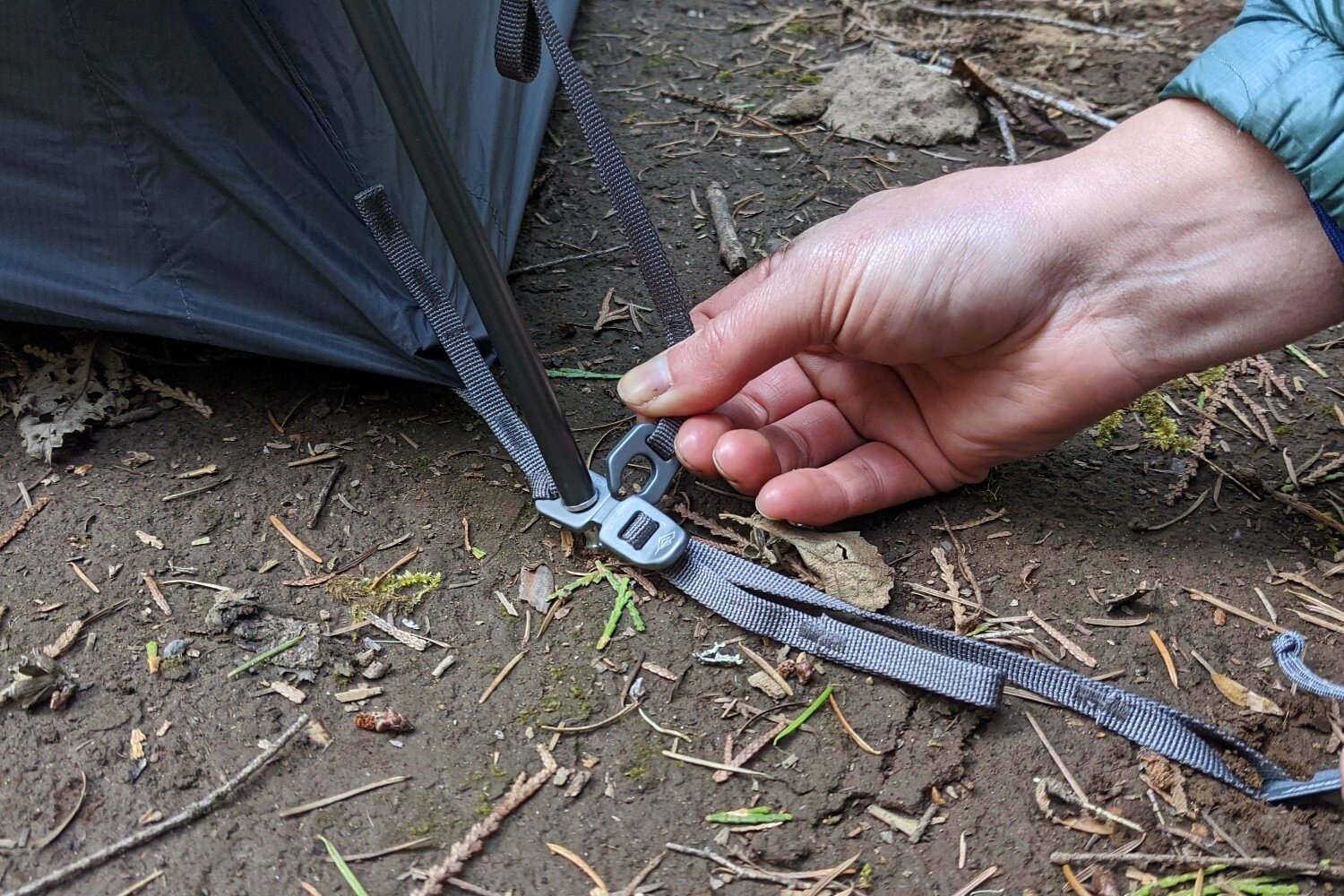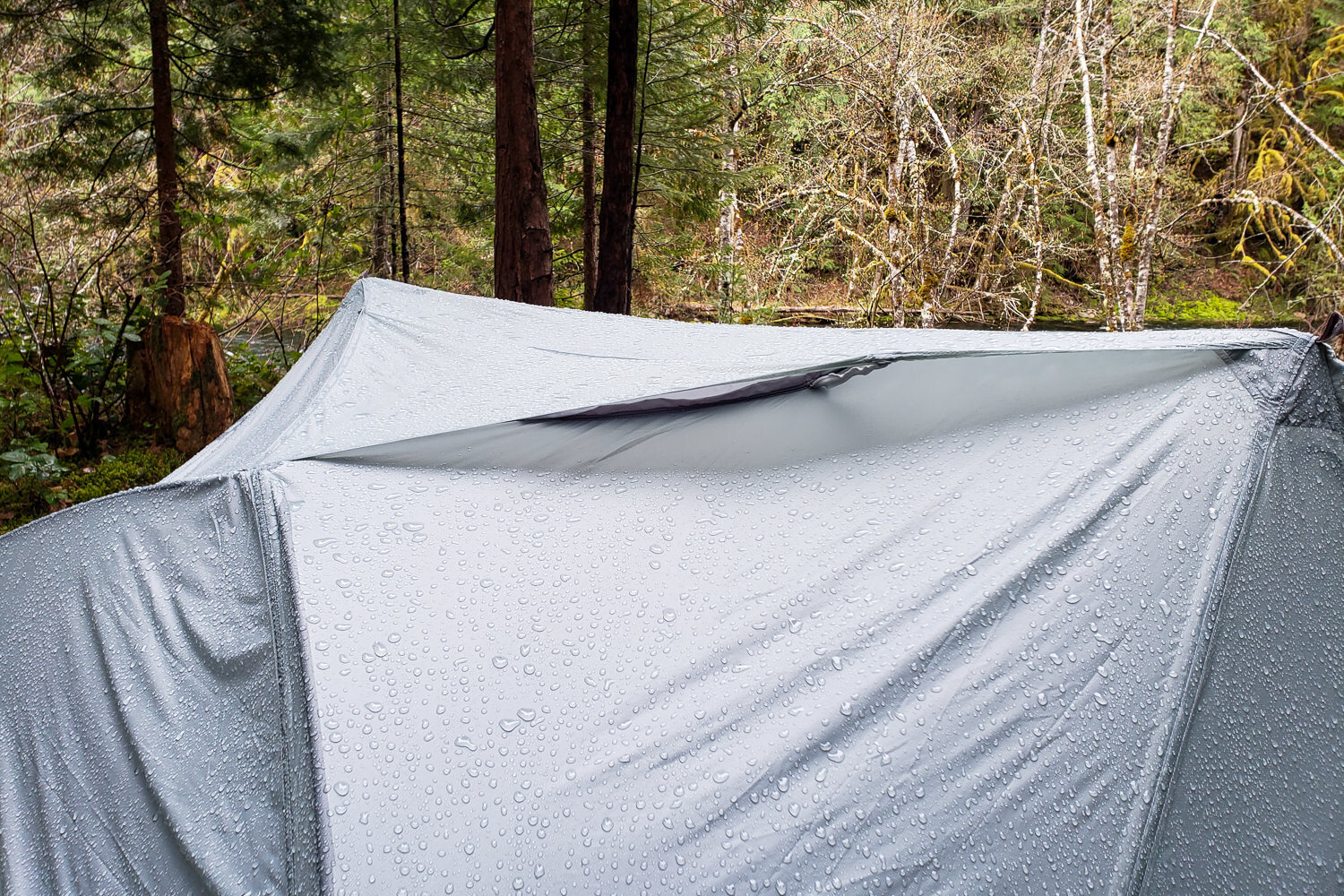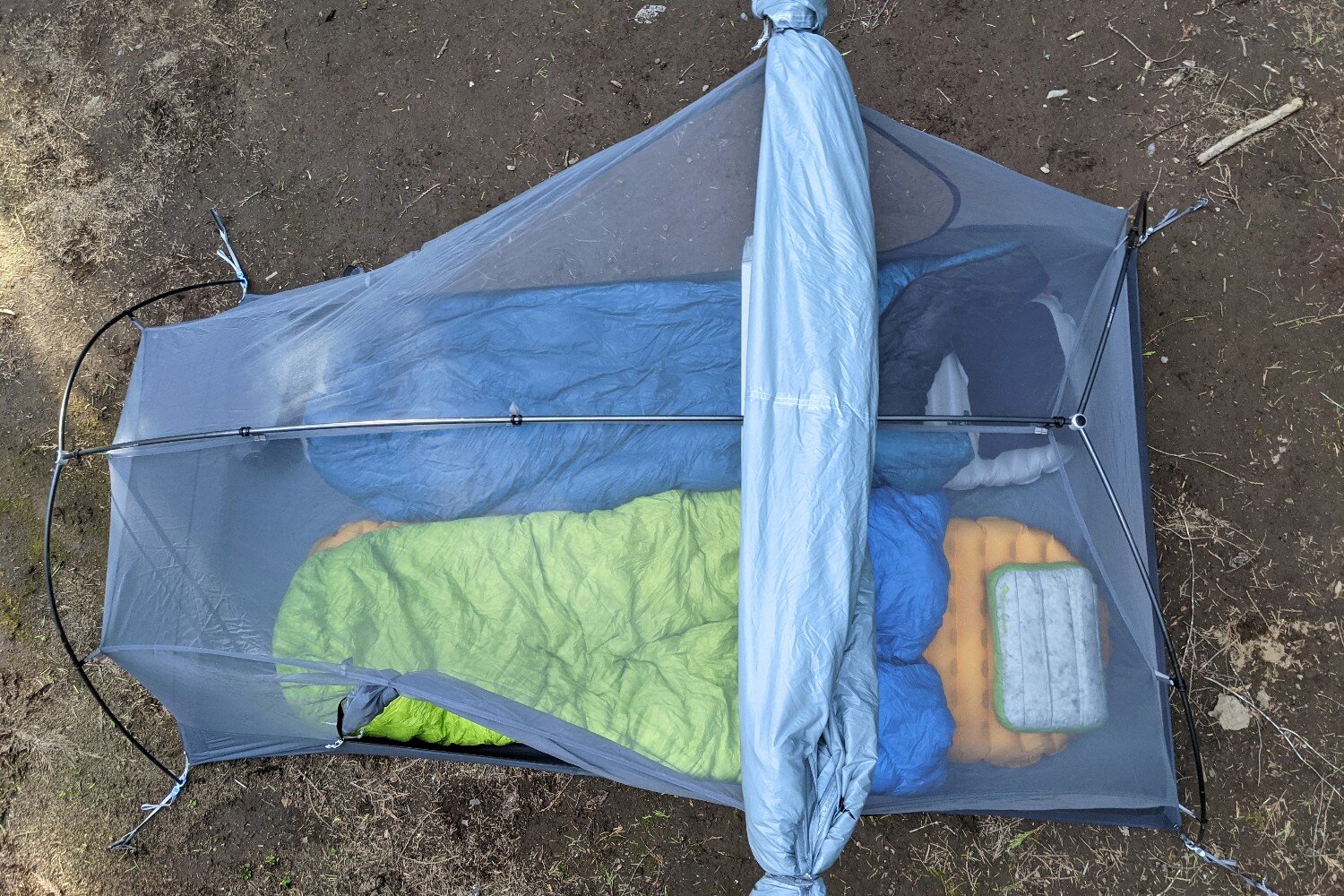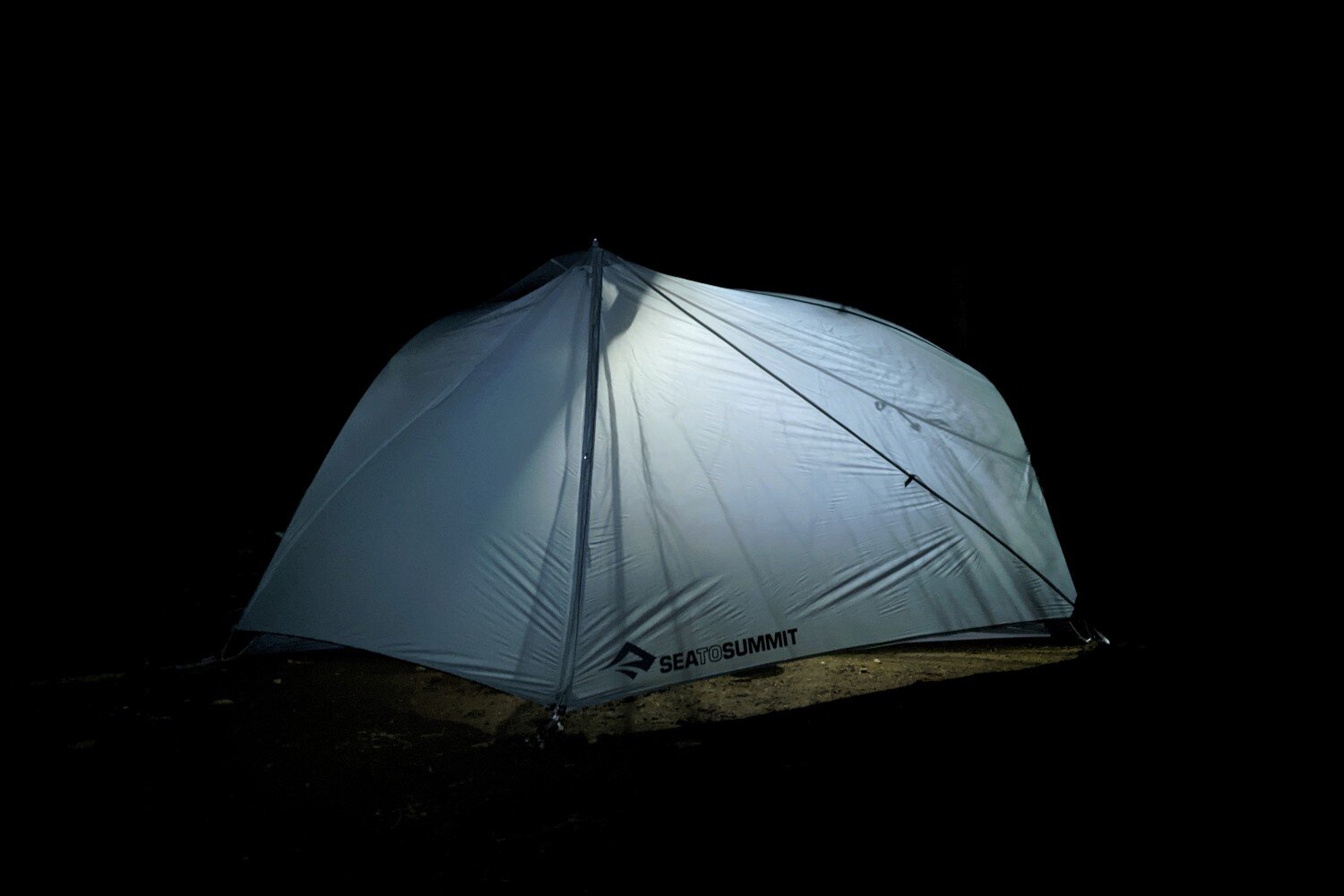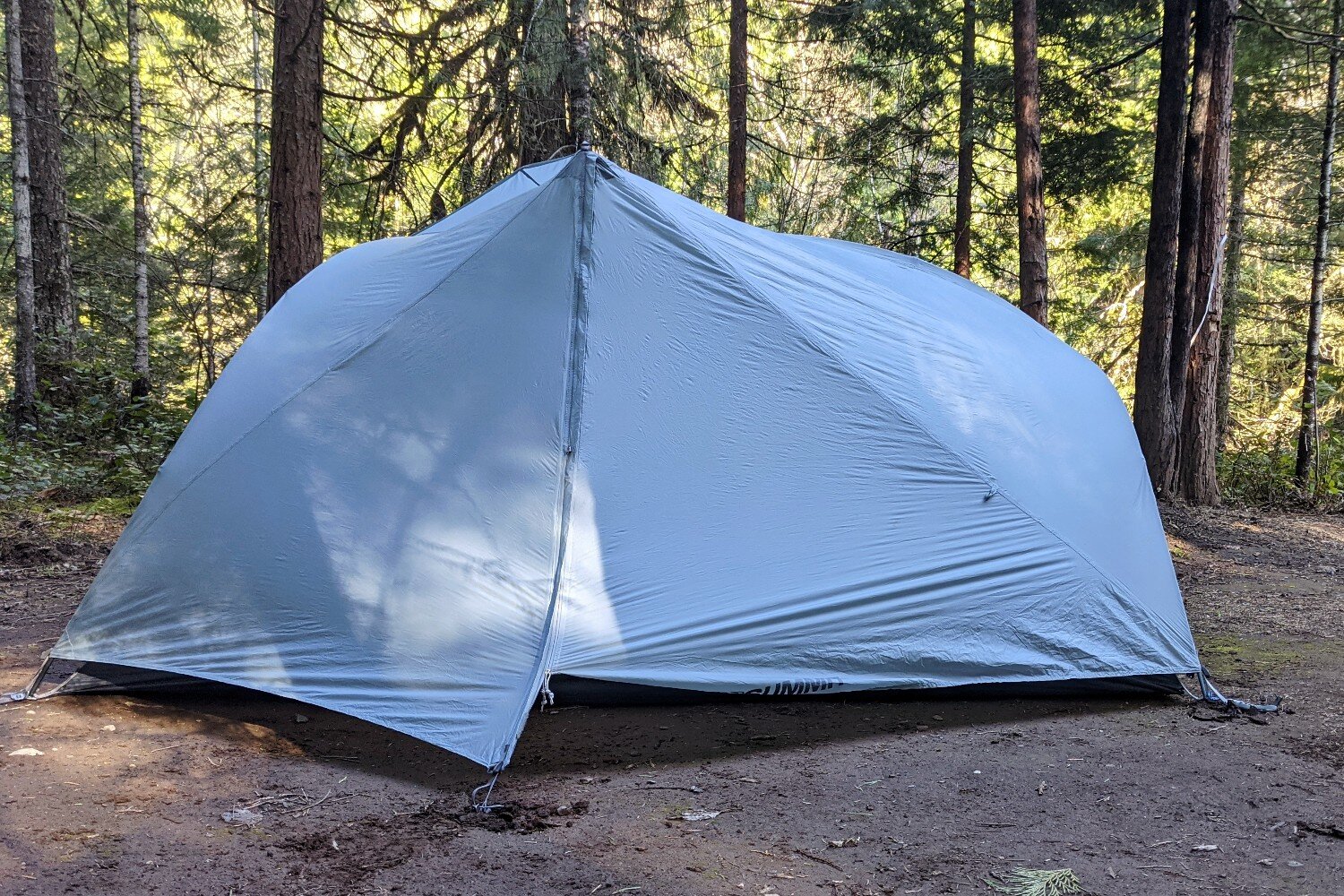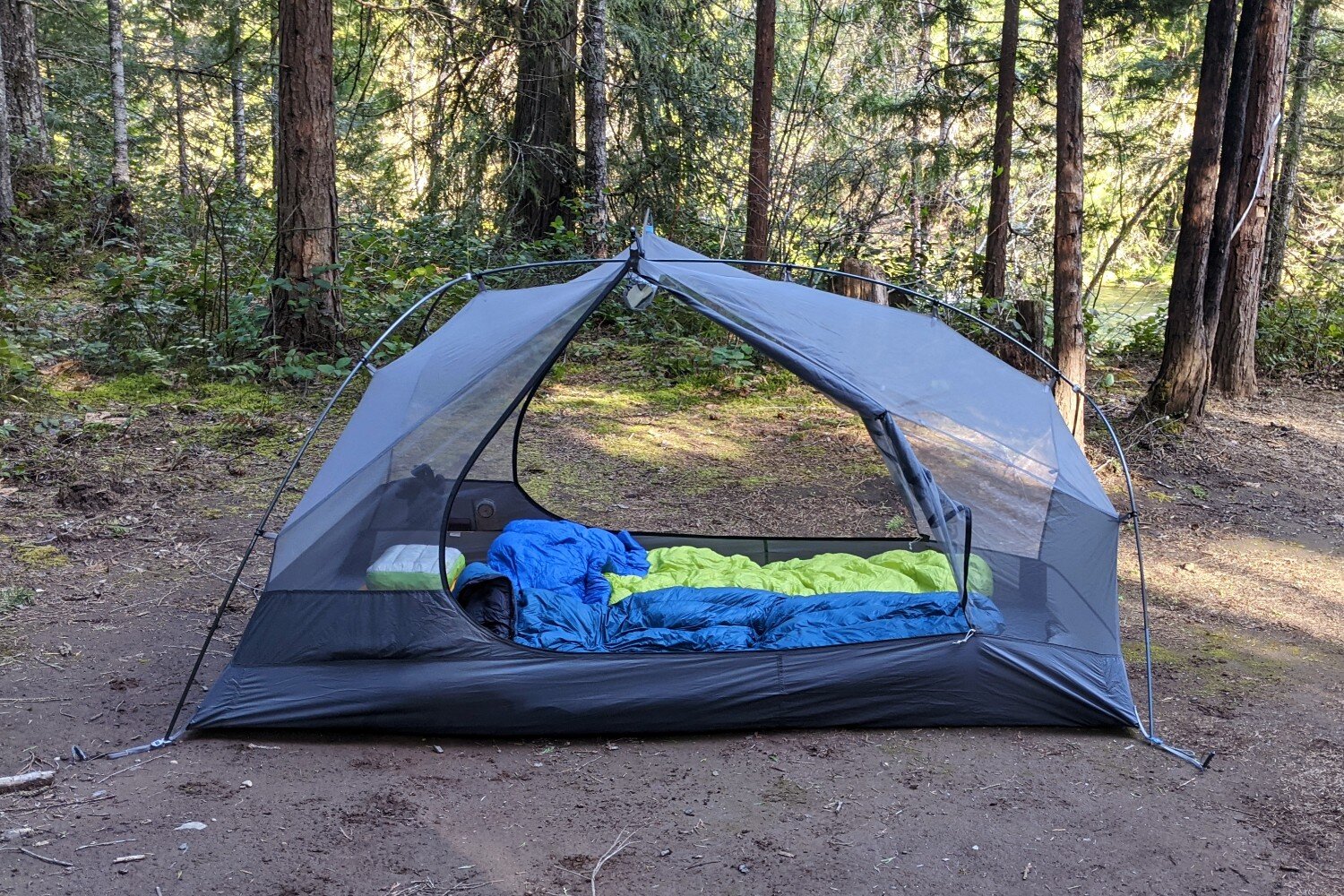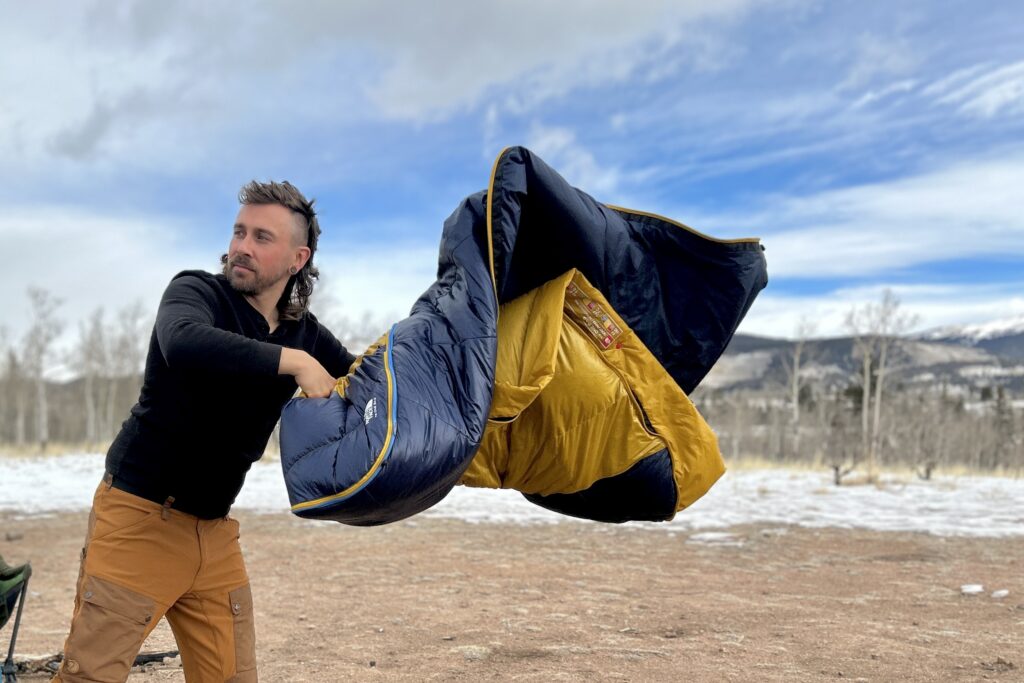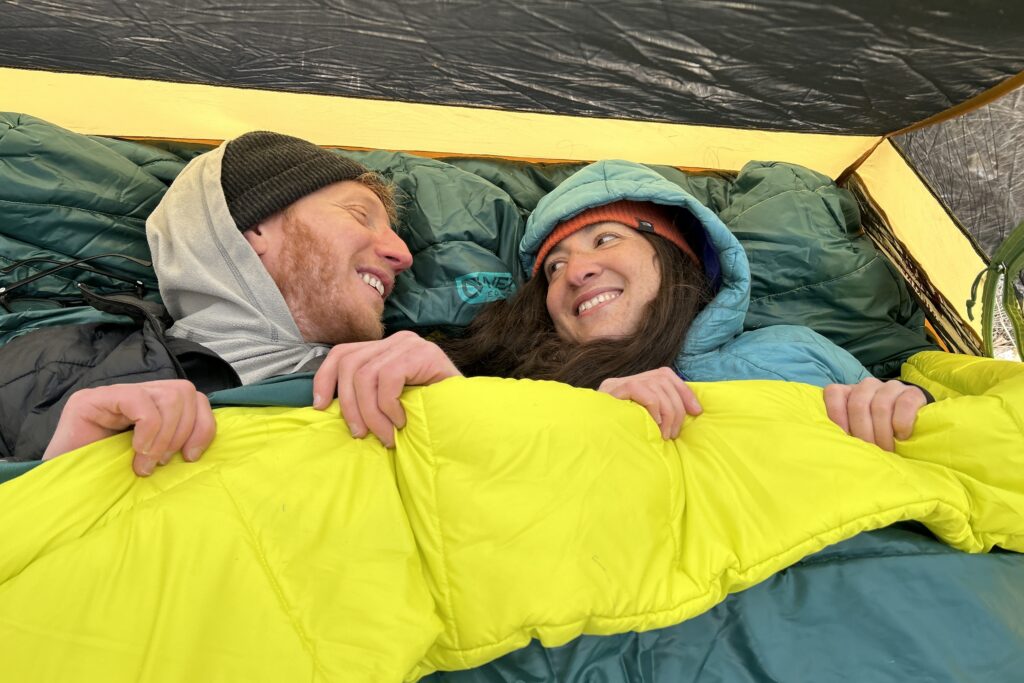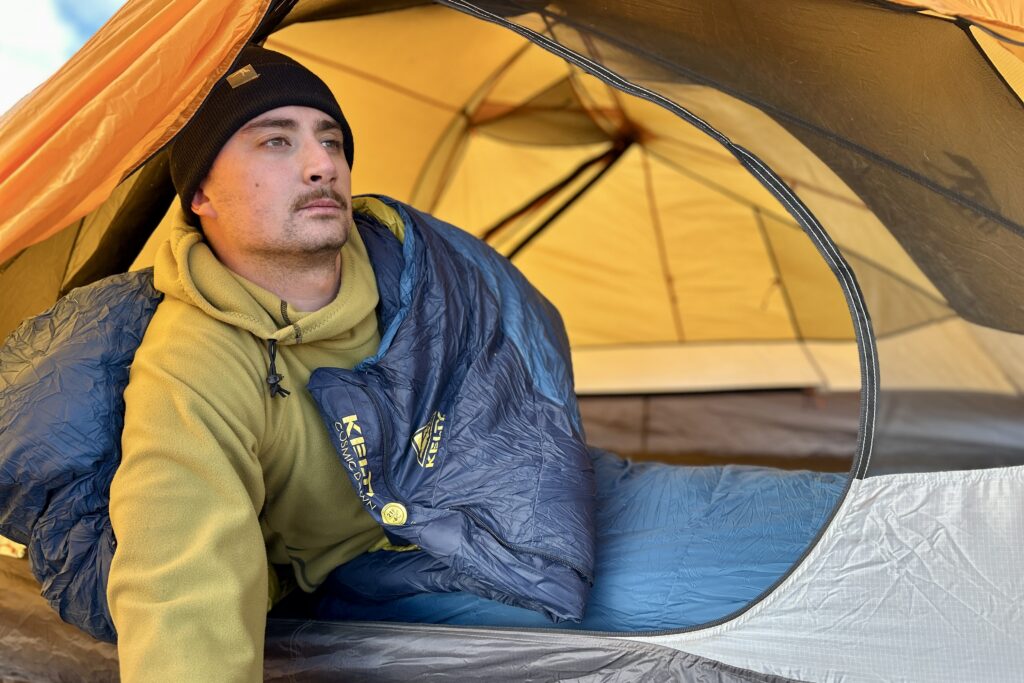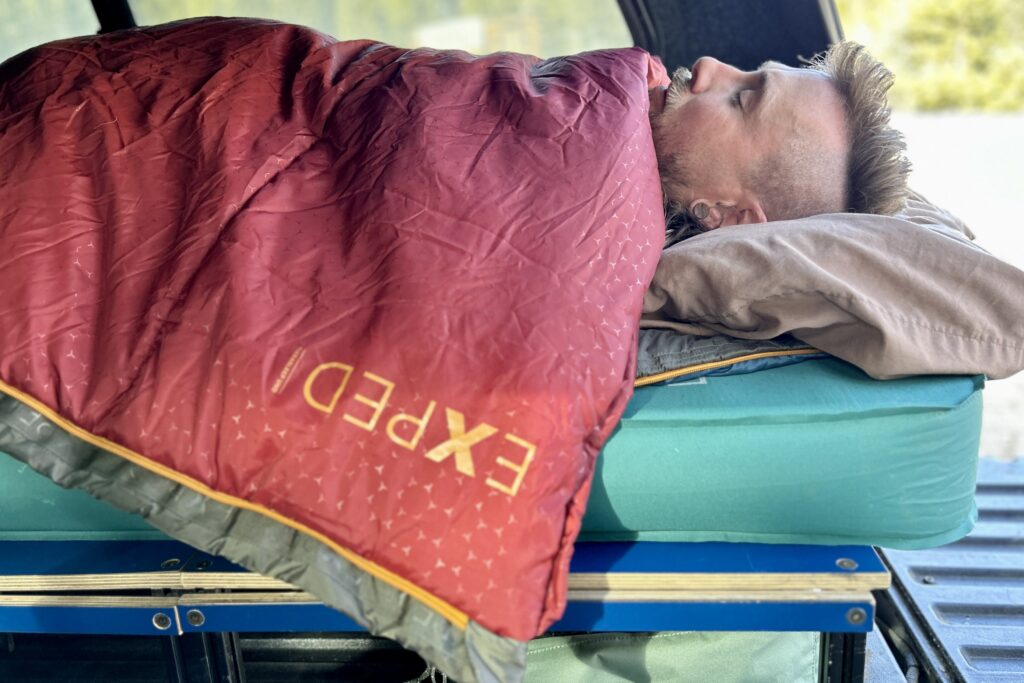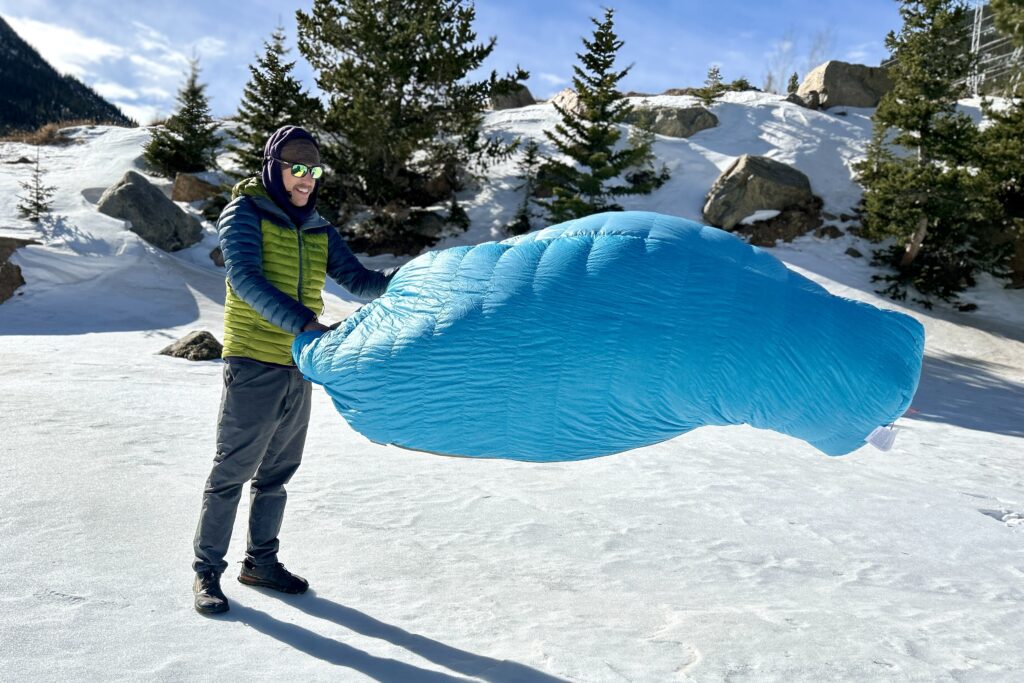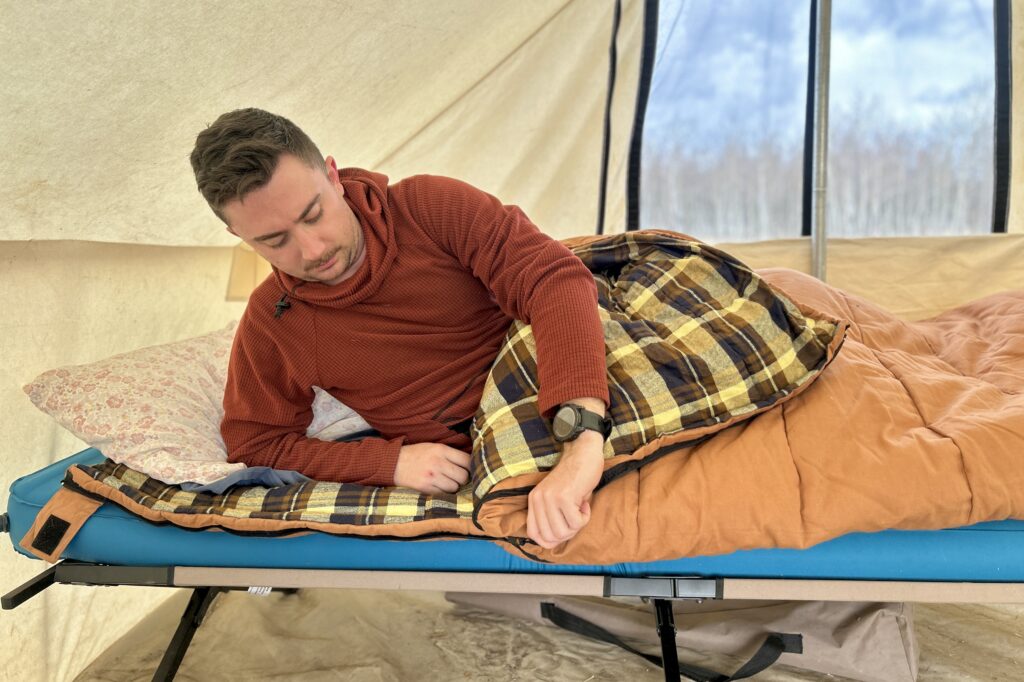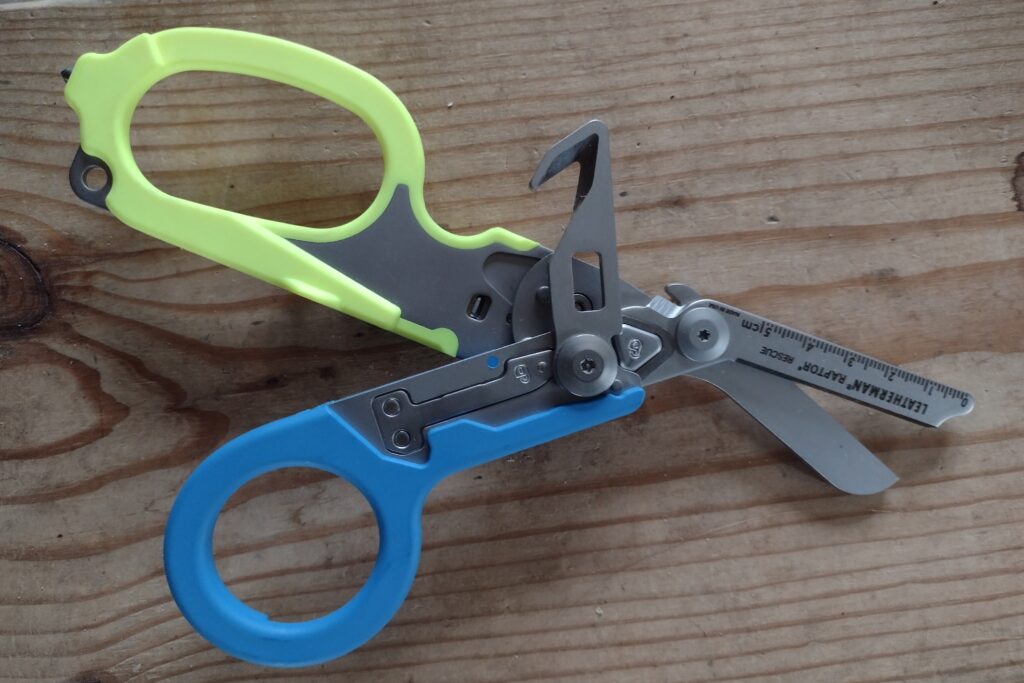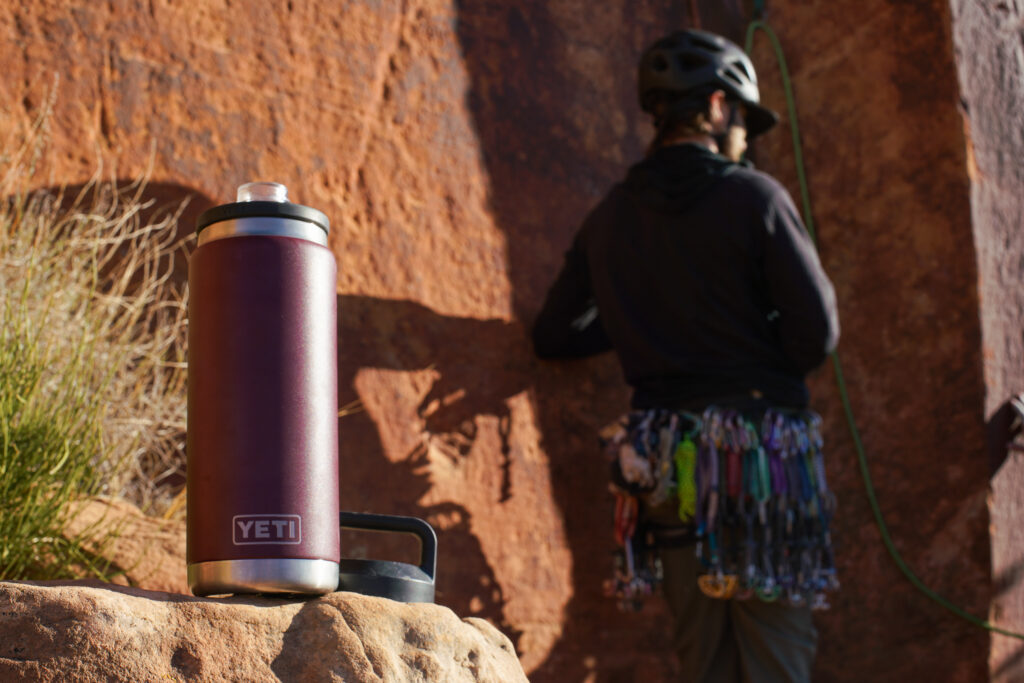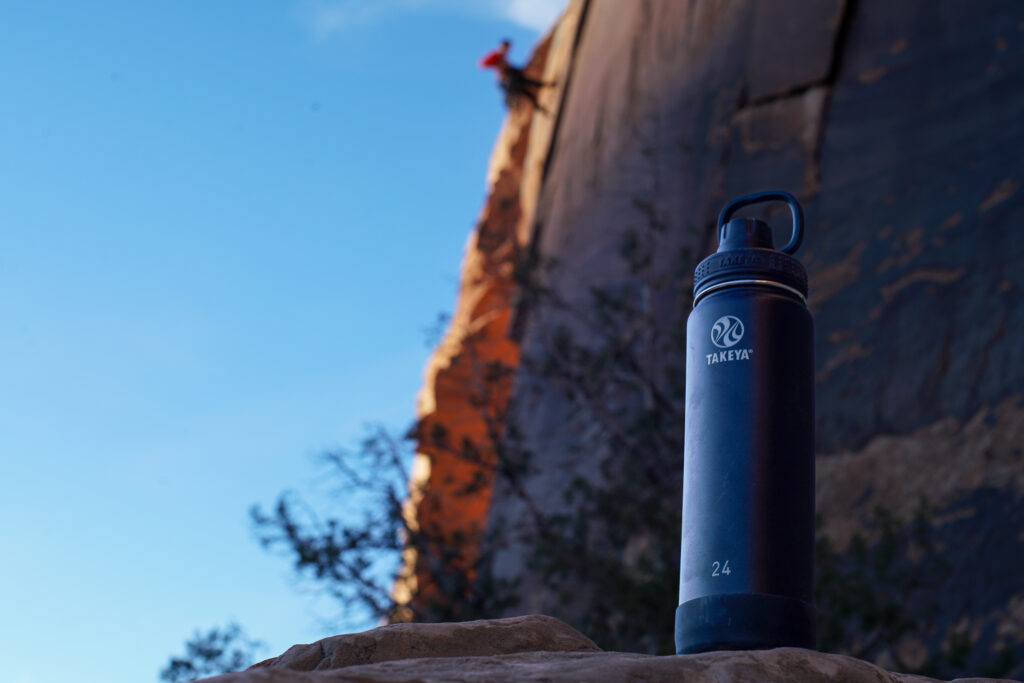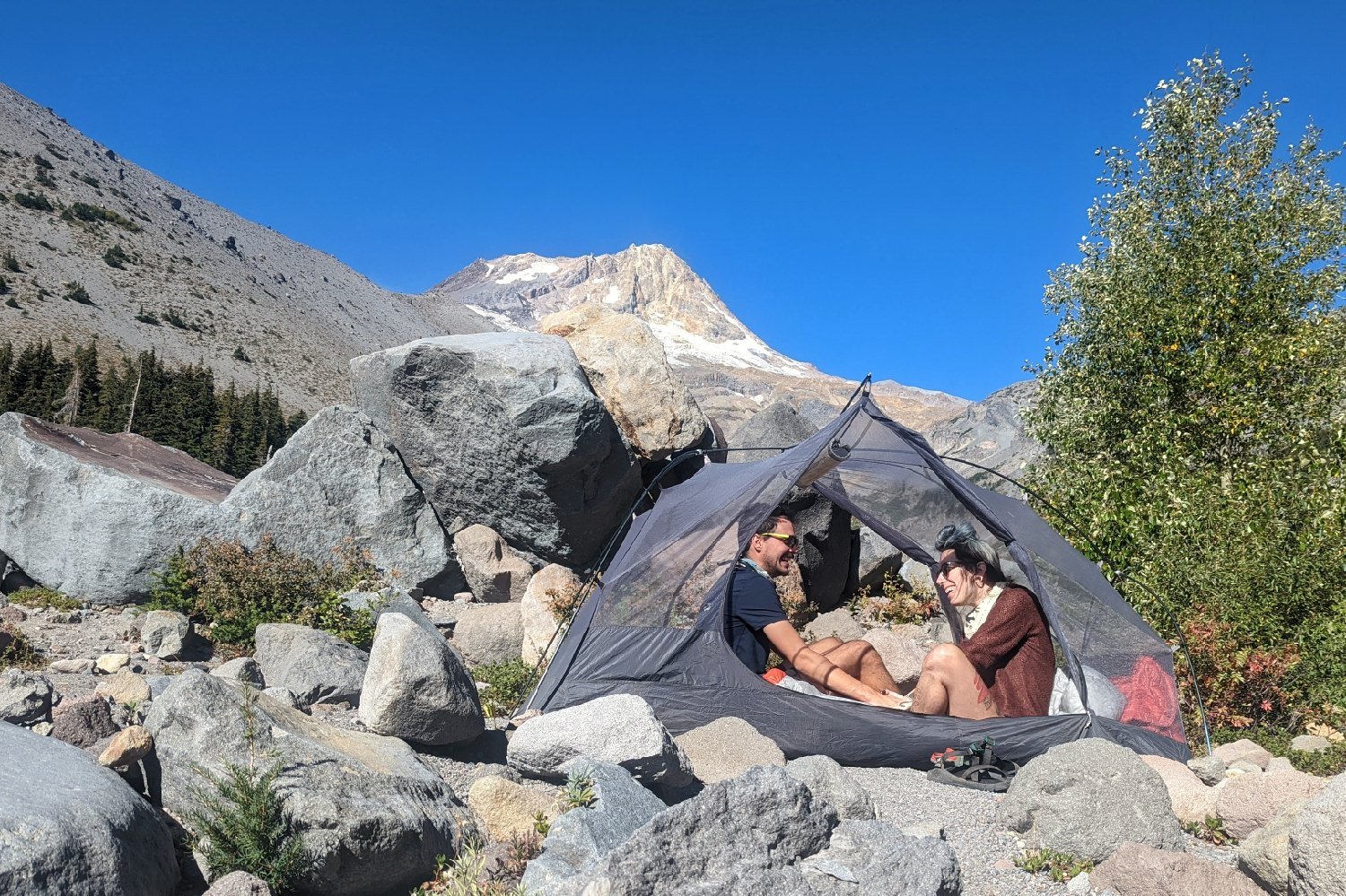
Bottom line
The Sea to Summit Telos TR2 stands out on our best backpacking tents guide for its remarkable headroom, weather resistance, and easy setup. Its innovative pole structure creates near-vertical walls and tall door openings, providing an airy and spacious interior unmatched by other tents. Solid ventilation through its apex and low vents keeps condensation at bay all night. CleverHiker Gear Analyst, Casey Handley, took the Telos on a rainy test hikes covering over 200 miles in the Pacific Northwest, including the 40-mile Timberline Trail. This spacious tent provided a cozy retreat for waiting out inclement weather when the rain started pouring. There was plenty of room to keep gear dry inside and enjoy a game of cards until the weather quieted down.
Luxury comes with a high price tag, which is a drawback for backpackers on a budget. The Telos is also on the heavy side compared to ultralight backpacking tents. Still, the Telos TR2 is worth considering for folks who want a fast and simple setup and top-tier comfort when backpacking.
Quick Specs
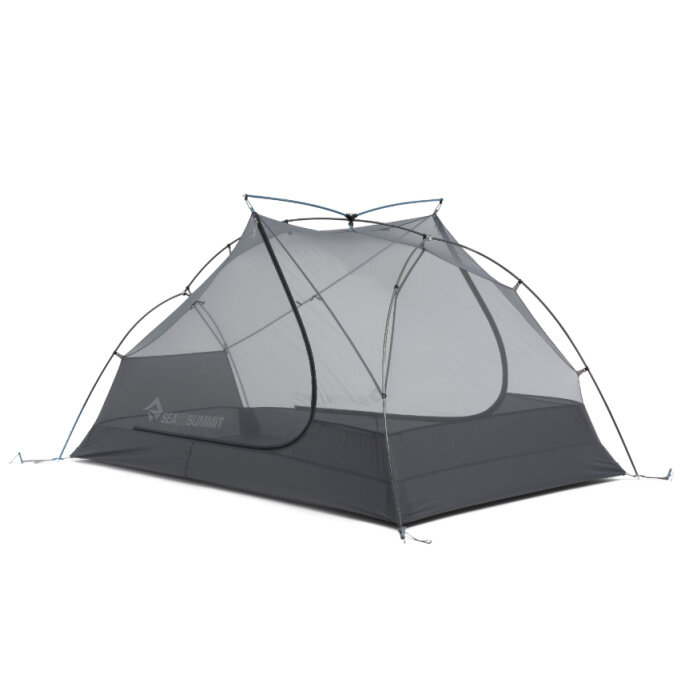
Sea to Summit Telos TR2
Exceptionally Spacious Backpacking Tent with Innovative Features
CleverHiker Rating: 78/100
Price: $449
Packed Weight: 3 lb. 10 oz.
Dimensions (LxWxH): 84.5 x 53 x 43 in.
Type: Freestanding
Pros
- Excellent headroom
- Quick/easy to set up
- Very light for the amount of space
- More comfortable living space than others
- Excellent ventilation
- Large doors/vestibules
Cons
- A bit heavier than some in this price range
- Unique stuff sacks not for everyone
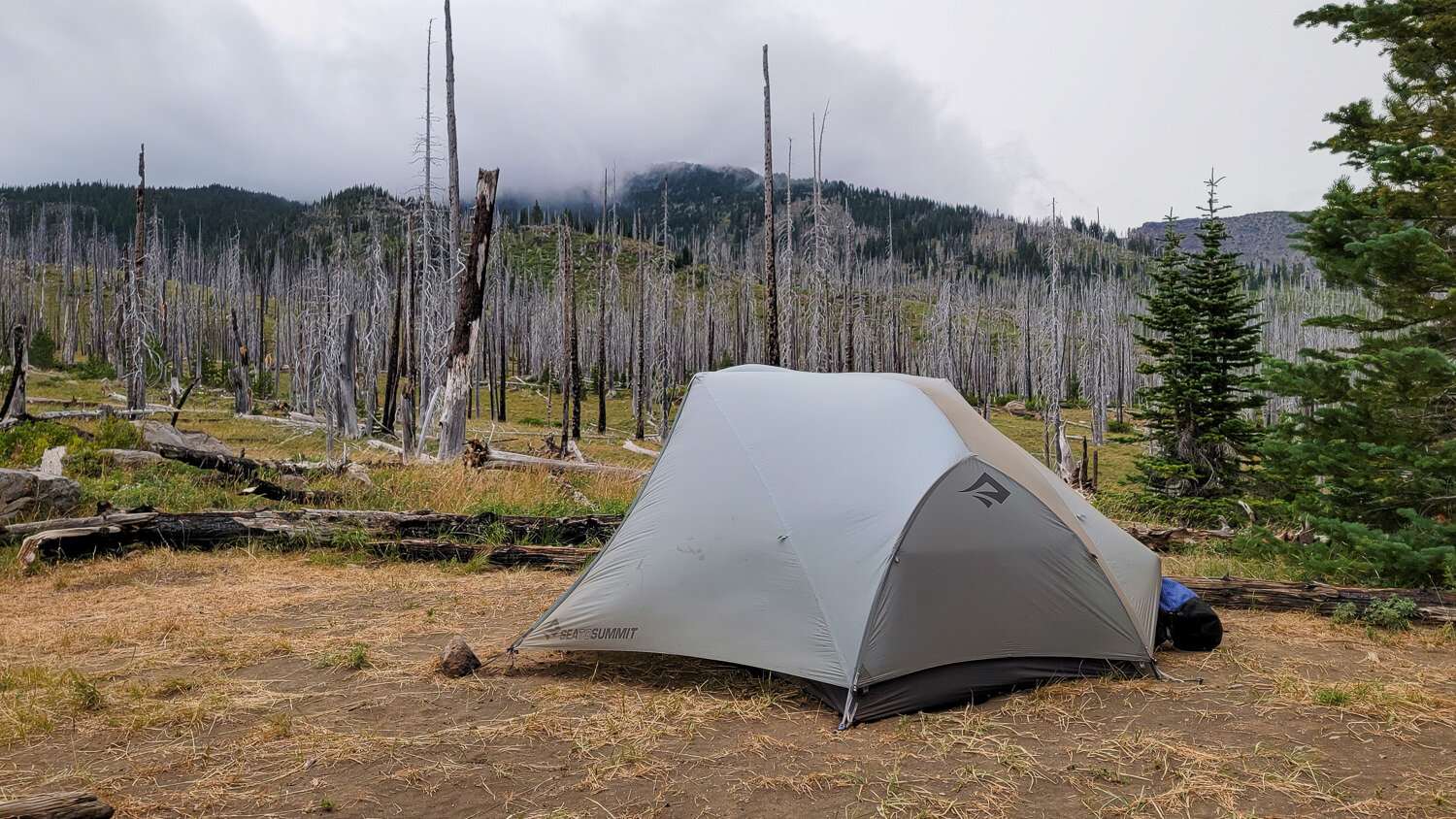
Comfort
Say goodbye to crawling and stooping and hello to high ceilings: the Telos 2 offers nearly unrivaled headroom for 2-person backpacking tents. The Tension Ridge, which angles the ceiling poles upwards and away from the tent, creates near-vertical sidewalls and huge door openings, resulting in a roomy interior that feels more livable than the competition. It’s worth noting that at 43.5 inches tall, this is at the higher end of the pack for ceiling height, so you’ll have no problem sitting up, moving around, and accessing gear – even with two people.
The large Apex Vent at the top of the rainfly can be zipped open or closed depending on the weather, and the clever Baseline Vent on the flap of the rainfly creates an effective circulating draft for superior ventilation when you need it. The tent’s vestibules are large enough for even the biggest backpacks. Features like integrated mesh pockets, storage sacks that double as even more interior storage, and a “Lightbar” that distributes your headlamp light into a soft overhead lantern add to the tent’s livability, making it a luxurious option for backcountry camping.
The Telos 2 does have some drawbacks. The floor space, while adequate, is slightly smaller than some tents in its category. In our opinion, the design’s emphasis on headroom doesn’t fully compensate for the limited floor area, which can be an issue for taller campers, folks who use wide pads, or those who like to spread out. The ventilation system is effective, but it’s another item on the list to adjust and tamper with when there are sudden weather changes. Finally, the premium features and materials that make this tent so comfy are expensive – although it regularly goes on sale for steep discounts, so you can often find it priced lower than competitive top-quality tents.
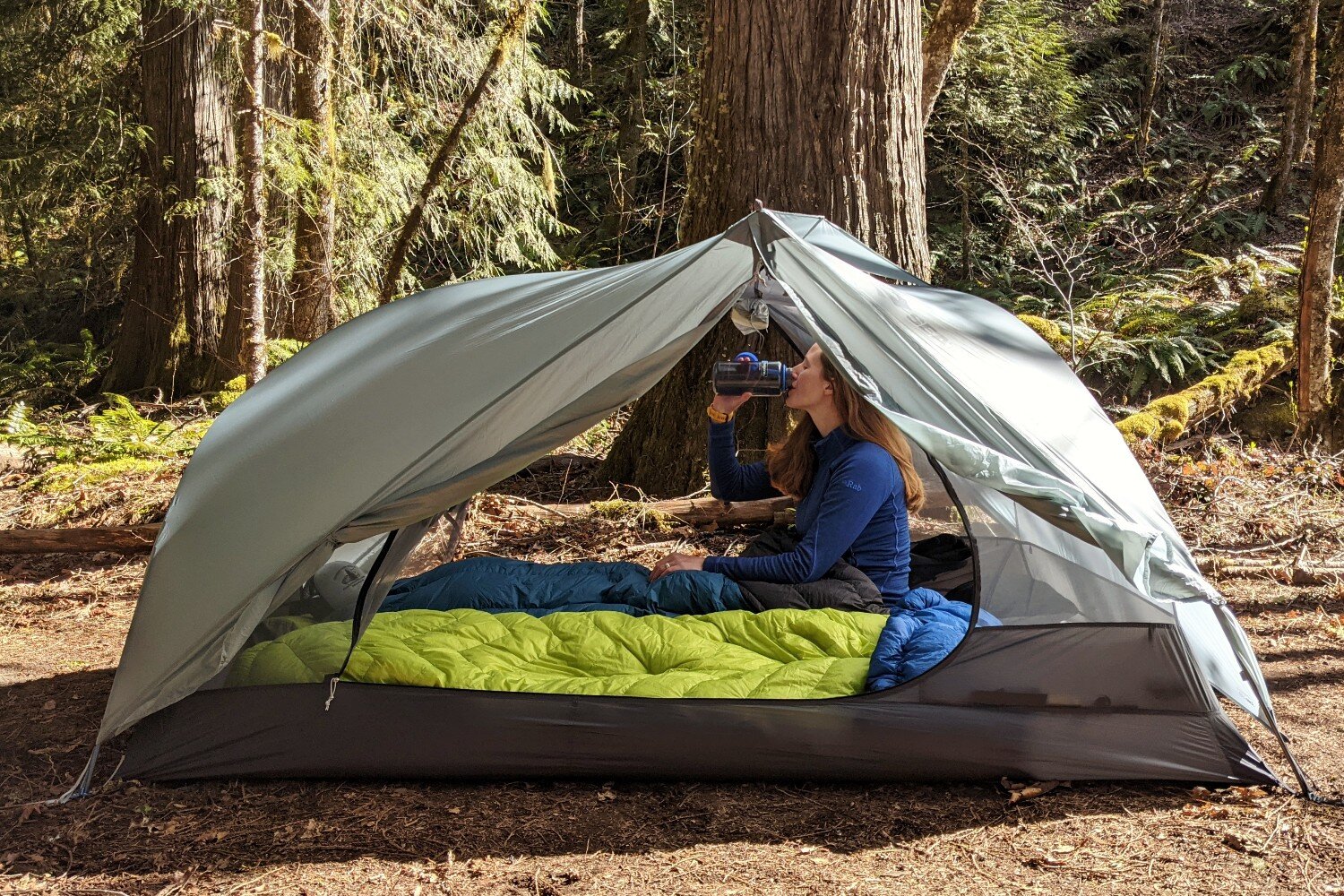
Weight & Packability
The Sea to Summit Telos TR2 has a clever design we haven’t seen in other tents, making it uniquely packable and awesome for splitting weight with a partner. The Fair Share Storage system allows two hikers to share the tent components, breaking the fly, tent body, and poles into three separate packages that nestle together. Even on solo trips, this system helps save pack space by allowing flexible storage options. The full setup packs down into an impressively compact bundle that is easy to carry, and at 3 pounds, 10 ounces, it strikes a reasonable balance between weight and comfort for short weekends or weeks-long hikes. While it’s not the lightest option available in backpacking tents, the manageable weight makes it a versatile choice for those who prioritize comfort and livability, even during shoulder seasons.
However, the storage sacks provided are small, which can make packing up the tent a bit frustrating. If the tent isn’t rolled tightly enough, fitting it back into the sack can be a bit of a struggle. This tight fit can also make stowing the tent poles difficult, potentially leading to a slowdown when you’re trying to pack up quickly in the backcountry. The tent is designed to compress neatly, but in practice, this requires extra care and precision. This aspect slightly diminishes the overall convenience, especially when compared to tents with larger and more forgiving stuff sack designs. And while we like the reasonable weight of this tent, it’s worth noting that it’s still heavier than many ultralight backpacking options. If your top priority is lowering pack weight, the Telos TR2 might not be the best fit.
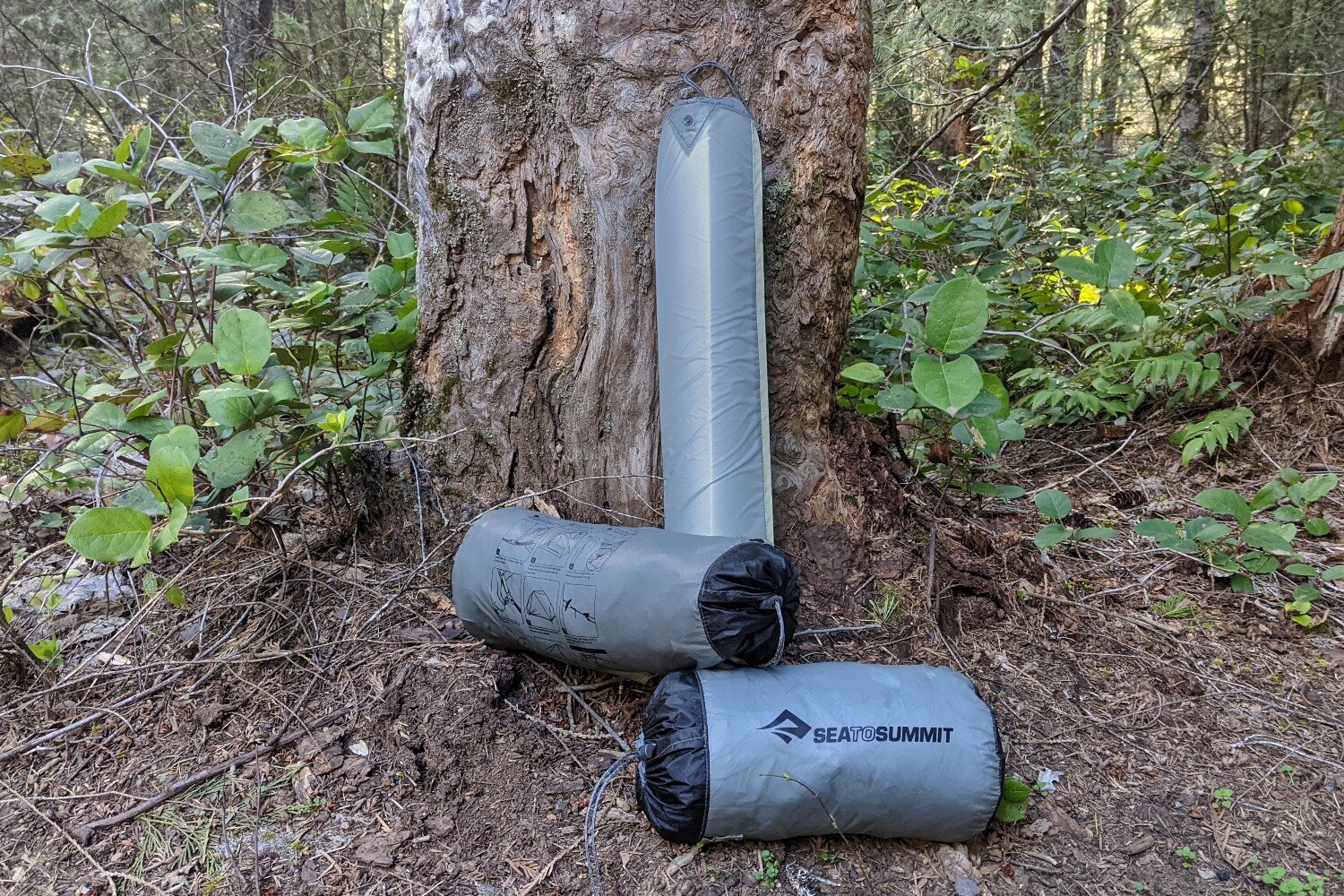
Weather Resistance
Rain or shine, the Telos TR2’s formidable 20-denier floor and 15-denier ripstop nylon rain fly are a reliable shield against the elements. These robust materials effectively keep the rain at bay, ensuring a dry interior even in heavy downpours. The tent’s rainfly can be set up fly-first, which helps keep your gear dry while you attach the inner tent if the weather turns when you reach your campsite. We love the versatile ventilation, which can be adjusted to manage condensation and temperature in a way that most tents can’t. This way, you can dial in the airflow based on preferences, climate, and conditions. The tent also features six ground control guylines with quick-connect V-toggles for customizable tension that you can adjust with one hand. One of the most unique elements of the TR2 is that the rainfly can be converted into a semi-open shelter using two hiking poles called “Hangout Mode.” This essentially turns the fly into a sun shade or a quick shelter from rain on the trail.
That said, the Telos TR2 comes up a bit short regarding severe weather resistance. The ripstop nylon, while durable, tends to sag a bit more than materials like silpoly or DCF when it’s cold or really rainy, affecting overall weather resistance a little bit. While we like the idea of Hangout Mode, in practice, this configuration is unstable in 10+ mph winds or heavy weather. Finally, the ample ventilation needs a bit more attention than most tents, so if the weather turns, dialing these vents in is quick, but it’s another camp task to stay on top of to keep rain out. Even with its minor hiccups, this tent offers an otherwise stellar performance when it comes to everyday weather.
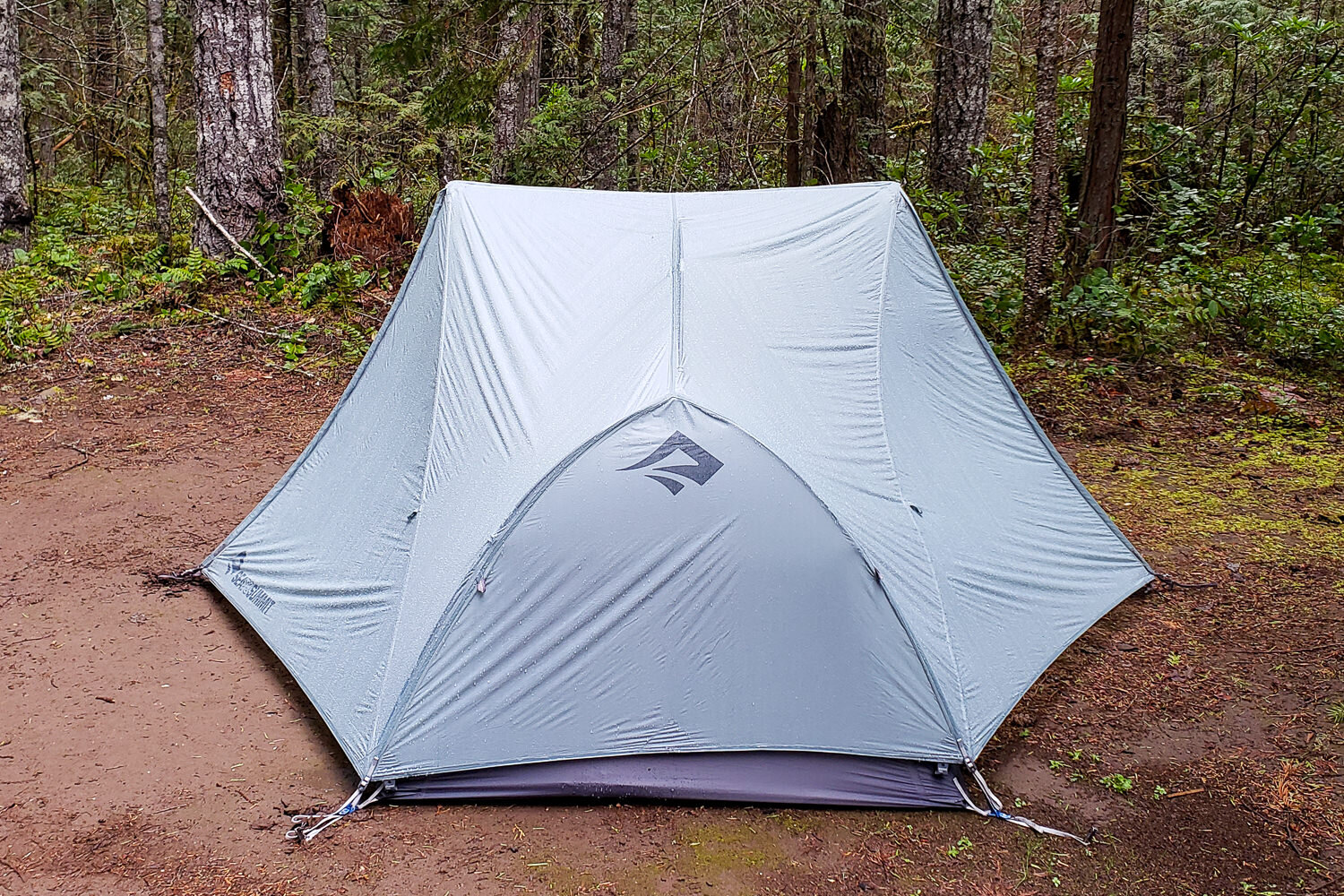
Ease of Setup
The Telos TR2’s freestanding design means you’ll be camp-ready long before your evening meal gets cold. Color-coded poles and clips streamline the setup, so even a solo hiker can hit the hay in minutes. The innovative Quick Connect clip system on the rainfly simplifies attachment and removal. The guy lines are user-friendly and easy to secure. The modular FairShare storage sack system is excellent for unpacking quickly since each element of the tent has its own stash bag. And, if you just need some shelter from the sun or a light rain, you can use two hiking poles to set up the tent and fly into a fast shelter on the trail, which is especially handy in low-shade desert and alpine hikes or for a bit of coverage midday. The Telos TR2 is smooth and fast to set up, so you’ll spend less time wrestling with your gear and more time relaxing.
But no tent is perfect, and the Telos TR2 has its own set of hurdles. Hangout Mode is impractical for anything but calm conditions, as it tends to catch breezes and become floppy if the wind picks up. Additionally, the guy lines, although easy to use, are fairly thin and begin to show wear and tear faster than we’d like. And, packing up the tent into its individual small storage sacks can be cumbersome and slow if it’s not folded just right.
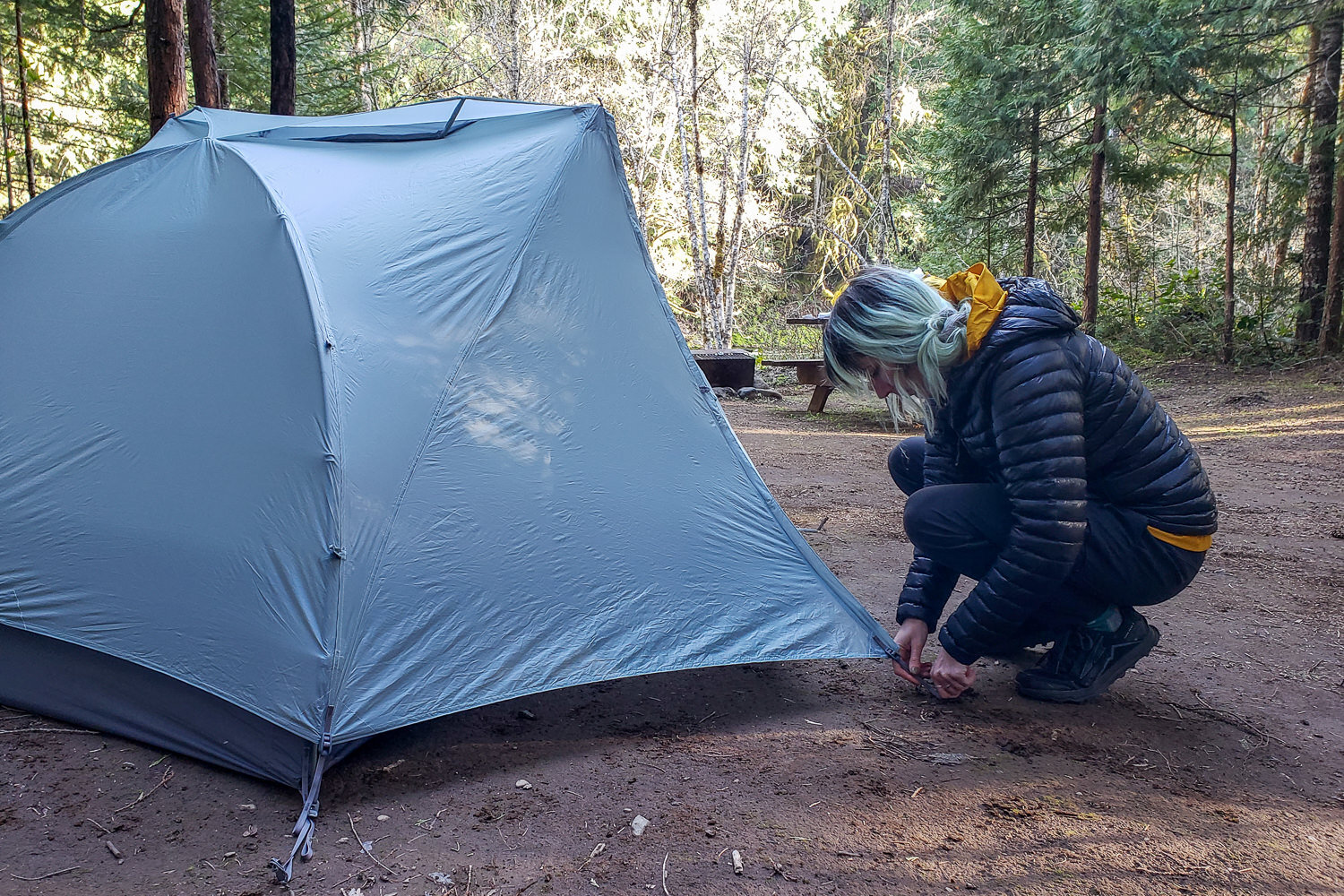
Durability
The Telos TR2 offers reliable durability in the most demanding and rough backcountry conditions thanks to its 20-denier ripstop nylon floor. This fabric thickness works well in backpacking tents because it offers reliable longevity and impressive resistance to damage. The tent also features 15-denier mesh and ripstop nylon for the fly. The DAC pole system uses different diameters to enhance strength while keeping weight down. All components get the same high-quality treatment, with reliable YKK zippers, robust aluminum hardware, and seam-taping. Machined aluminum clips – much more durable than plastic alternatives – securely attach the poles to the inner foot. If you spend a lot of time outdoors and want a tent built to last, the Telos TR2’s durability is an asset for those seeking a reliable shelter for frequent and demanding adventures in harsh conditions.
But, high-end durability isn’t cheap, so the Telos TR2 can be a bit of an investment – luckily, this tent goes on sale often, making the price very competitive with similar tents. These top-quality materials also make the tent a bit heavier than other backpacking tents, which is a disadvantage for ultralight backpackers. Also, the stakes, while functional and sturdy, aren’t the strongest: Gear Analyst Ian Krammer learned this the hard way when he bent 2 of the 8 stakes during his first pitch in relatively soft soil. Despite these concerns, the Telos TR2 remains an outstanding choice for those willing to invest in a quality, long-lasting shelter.
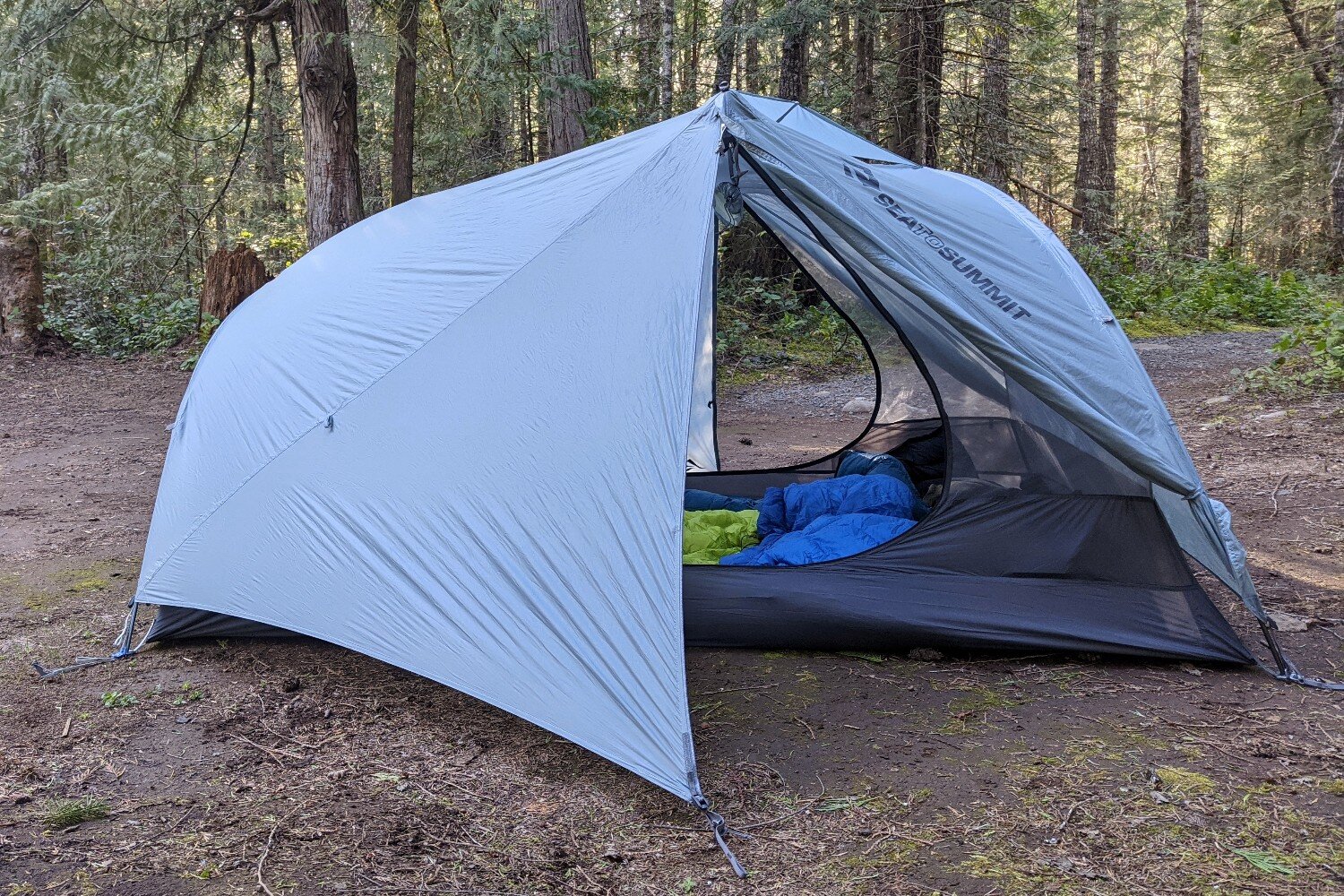
Should You Buy the Sea to Summit Telos TR2?
If you’re looking for a tent that’s comfy as heck and easy to pitch, the Telos TR2 is for you. Its innovative pole structure provides exceptional headroom, so it’s perfect for folks who dislike the typical cramped quarters of traditional two-person tents. The TR2’s excellent ventilation system offers comfy, condensation-free nights – even in humid conditions – making it an awesome choice for hikers who camp from June until September. Features like the Lightbar and adaptable Hangout Mode add even more convenience and transform the tent into a versatile and cozy retreat after long days on the trail. This tent is tailor-made for pairs who appreciate a bit of extra space and are willing to invest in a premium, long-lasting option.
However, the Telos TR2 may not be the best choice for ultralight enthusiasts or those on a tight budget. Although it offers top-notch comfort, it’s slightly heavier than other ultralight models – and it’s still a bit pricey, even on sale. If you’re trying to keep costs down, lighter and cheaper alternatives could be better options.
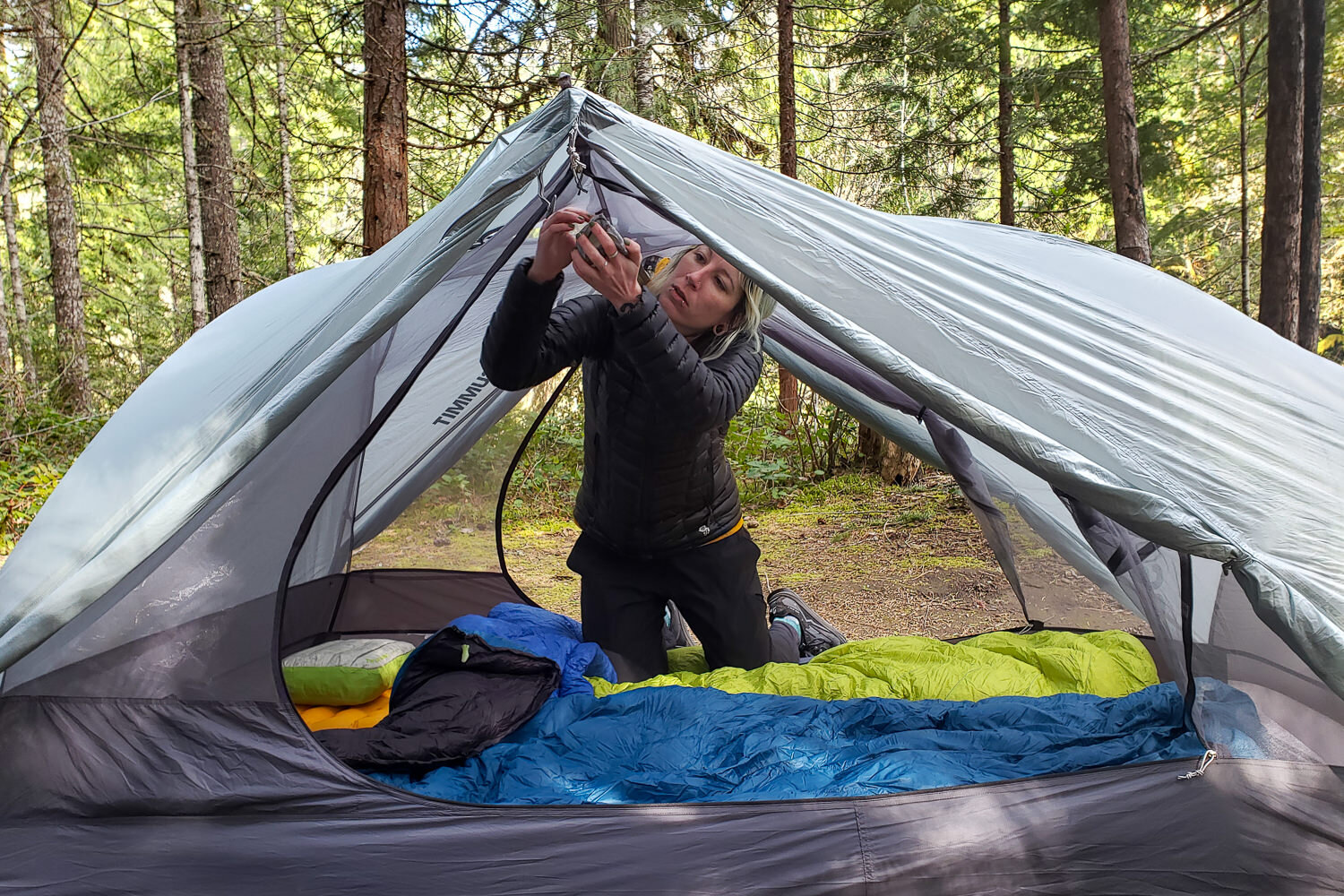
What Other Backpacking Tents Should You Consider?
SlingFin Portal 2 Review: The SlingFin Portal 2 is similar to the Telos TR2 in size, comfort, and ease of setup. The difference is that the Portal 2 is designed for more technical backpacking in worse weather, so it’s focus is more on rain and snow resistance as well as durability, although it weighs and costs less.
Big Agnes Tiger Wall UL2 Review: The Big Agnes Tiger Wall UL2 offers a wider and longer interior than the Telos and it still has a tall peak height, making it a very comfortable option for backpackers. The Tiger Wall 3 is also 11 oz. lighter than the Telos and it’s sold at a similar price point, making it one of our favorite lightweight and roomy options for hikers.
Big Agnes Copper Spur HV UL2 Review: The Big Agnes Copper Spur HV UL2 is a freestanding tent that’s similar in size and quick to pitch like the Telos TR2. It doesn’t have quite the same amount of headroom as the Telos, but it’s lighter, has excellent pockets, and is one of the most balanced all-around freestanding backpacking tents on the market.
